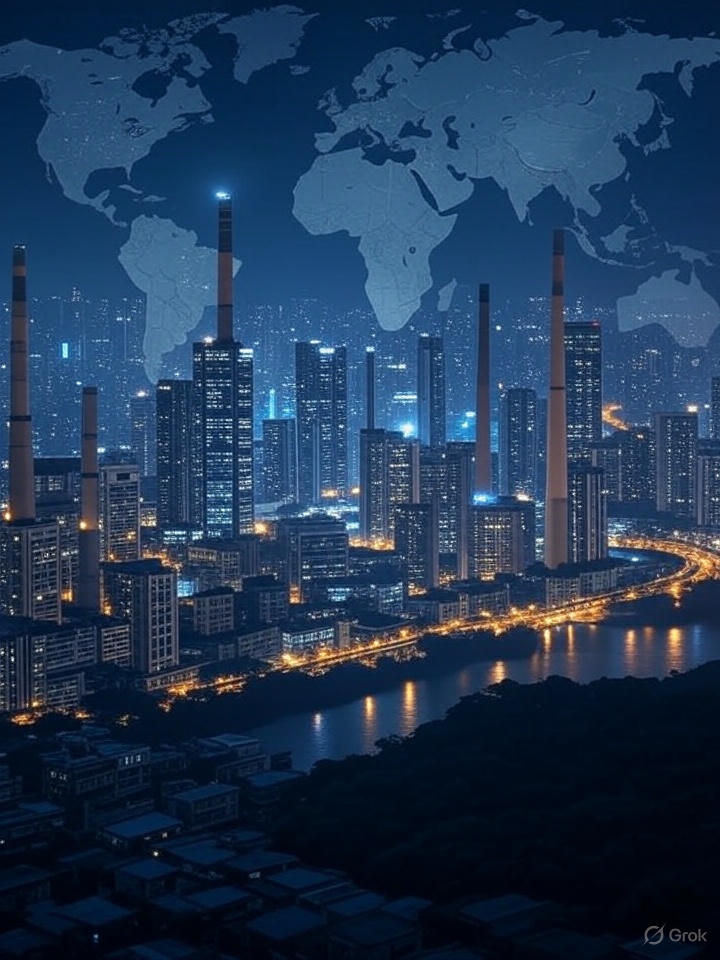Farmland’s Collapse : Truth Beneath the Soil
- thebrink2028
- Aug 18
- 4 min read

It begins, as all tragic dramas do, with an illusion: fields as far as the eye can see, promising plenty. But beneath the surface—beyond what the economic forecasts and glossy agricultural reports show—lies a creeping disaster. The #Homokhátság region of #Hungary, a vast breadbasket between the Tisza and Danube rivers, is turning into a semi-desert. This is reality, unfolding in real time, and its scars run deeper than statistics.
The Collapse: Hungary’s Semi-Desert Shocks the World
Imagine missing a whole season’s worth of rain. In the Homokhátság, the top meter of soil is now 150–170mm short of precipitation—this isn’t a minor blip, it’s an aggressive erasure of life from the land. Cereal crops—corn, grain, sunflower—are shriveled, transformed from pride to liability. Groundwater, once abundant, is vanishing, forcing even generational farmers like Krisztian Kisjuhasz to consider leaving for greener pastures (and he’s packing up five generations of dreams with him). The government scrambles—billions of forints for water retention, canal cleaning—but it’s a losing race against evaporation, heatwaves, and perverse weather fronts.
In the Great Hungarian Plain, hope is drying up faster than the rain after a drought. With each passing week, yields are falling, fruits scald in the sun, and vegetables bake before they’re ready. As meteorologist Balázs Fehér warns, temporary showers bring marginal relief, but the region’s fate seems sealed by persistent climate trauma.
The media, finance experts, and—yes—even government spokespeople, continue to spin the “upward trajectory” story: subsidies will save the day, markets are merely adjusting, and optimism is conveniently commoditized. Reality shows something else.
In 2022 alone, Hungary’s drought cost agricultural losses of $2.86b and fueled inflation to two-decade highs. But in boardrooms and policy briefings, these numbers barely make a ripple compared to the insistence on short-term fixes and magical future rain.
Farmers doubt their own memories, blame individual luck, and ultimately lose faith. Entire communities face what economists call “learned helplessness,” a passive collapse that feels eerily orchestrated, not natural.
The Global Storm
TheBrink tells, Which Nations Are Next in Line?
Hungary is not an isolated tragedy—it’s an early warning. Desertification stalks 168 countries worldwide, devouring an estimated 120,000sq km of land every year. The ripple effects are already visible in,
Yemen: Up to 97% of farmland faces imminent desertification, with 3–5% of cultivable land lost annually. This worsens food insecurity and, for millions, threatens livelihoods and life itself.
India: More than 40% of districts are drought-prone, especially those reliant on rain-fed crops. In Maharashtra, declining yields force mass migration, pressuring cities, and amplifying poverty.
Spain, Italy, Bulgaria: Southern Europe’s agricultural heartlands experience chronic drought, groundwater depletion, towering wildfires, and soil salinization—each amplifying desert collapse.
South Sudan and Sahel: Desertification creeps like a silent cancer, worsened by climate change and political neglect. Hunger and forced migration follow, as if by clockwork.
These aren’t just warnings—they’re scientific predictions based on rapidly worsening data. Even cutting-edge irrigation and sustainable farming can only slow, not reverse, the collapse.
TheBrink exposes, Buried Truths
What the mainstream won’t say: Desertification isn’t a sudden disaster—it’s been building for decades, masked by technology, hidden by new “hardier” breeds of crops, and papered over by financial wizardry. Intensive agriculture, over-extraction of groundwater, unsustainable fertilizer use, and global warming have pushed soils to the edge in more than a quarter of European farmland. The Great Hungarian Plain is the test subject, but soon the experiment goes global.
TheBrink advises to Watch out for:
Water tables dropping quietly in prosperous regions.
“Climate resilience” policies that fail to address the root cause—soil health.
Food prices spiraling beyond the understanding of average citizens.
Local migration, disguised as “urban opportunities,” erasing centuries of rural tradition.
Wild species disappearances signaling ecosystem collapse before it surfaces as economic disaster.
TheBrinks What Happens Next: Predictive Analysis
If urgent intervention isn’t initiated now—active soil restoration, strict water management, climate adaptation—it’s not just Hungary or Yemen at risk. Southern Europe, central India, and parts of South America will see agriculture become relics of a past era. Expect:
Food insecurity rippling through global supply chains.
Inflation spikes, urban slum expansion, and political instability.
New waves of climate refugees—first internally, then across borders.
As always, the official story will try to mask the pain with optimism.
Can You Crack the Hidden Warning?
A special challenge for TheBrink readers: Find the next city or region quietly sliding into agricultural collapse, before it makes the headlines. The most insightful answer wins a $50 smart reward—and the pride of knowing you saw what others missed. Are you ready for the challenge, or will you just let another crisis go unnoticed?
A Heartfelt Thank You
This research is proudly sponsored by Ela Bogdanska from Gdansk, Poland—a child of farmers whose family lost their land to floods twice in the past decade. Ela’s passion to expose the truth about soil, climate catastrophe, and rural futures inspired her investment in TheBrink’s investigative reporting. Her dream is simple: to prevent the tragedy her homeland suffered from repeating across the globe, and to empower others to step forward and support transparent, hard-hitting journalism for a better future.
Let’s pay attention, let’s act, and—most importantly—let’s dare to face the brutal truth before it’s swallowed by drought.
-Chetan Desai
Thank you for your interest in supporting TheBrink! Your appreciation means the world to us, and any contribution, whether funding future research or a token of thanks, helps fuel stories that uncover hidden truths and inspire change. If this article has sparked insights for you or your organization, you can show your support by clicking on Sponsor or reaching out directly thebrink2028@gmail.com to discuss funding opportunities. Every contribution powers our mission to deliver deep, impactful reporting. Let’s keep the conversation going.


